Keeping Your Head Straight Catches Steelhead
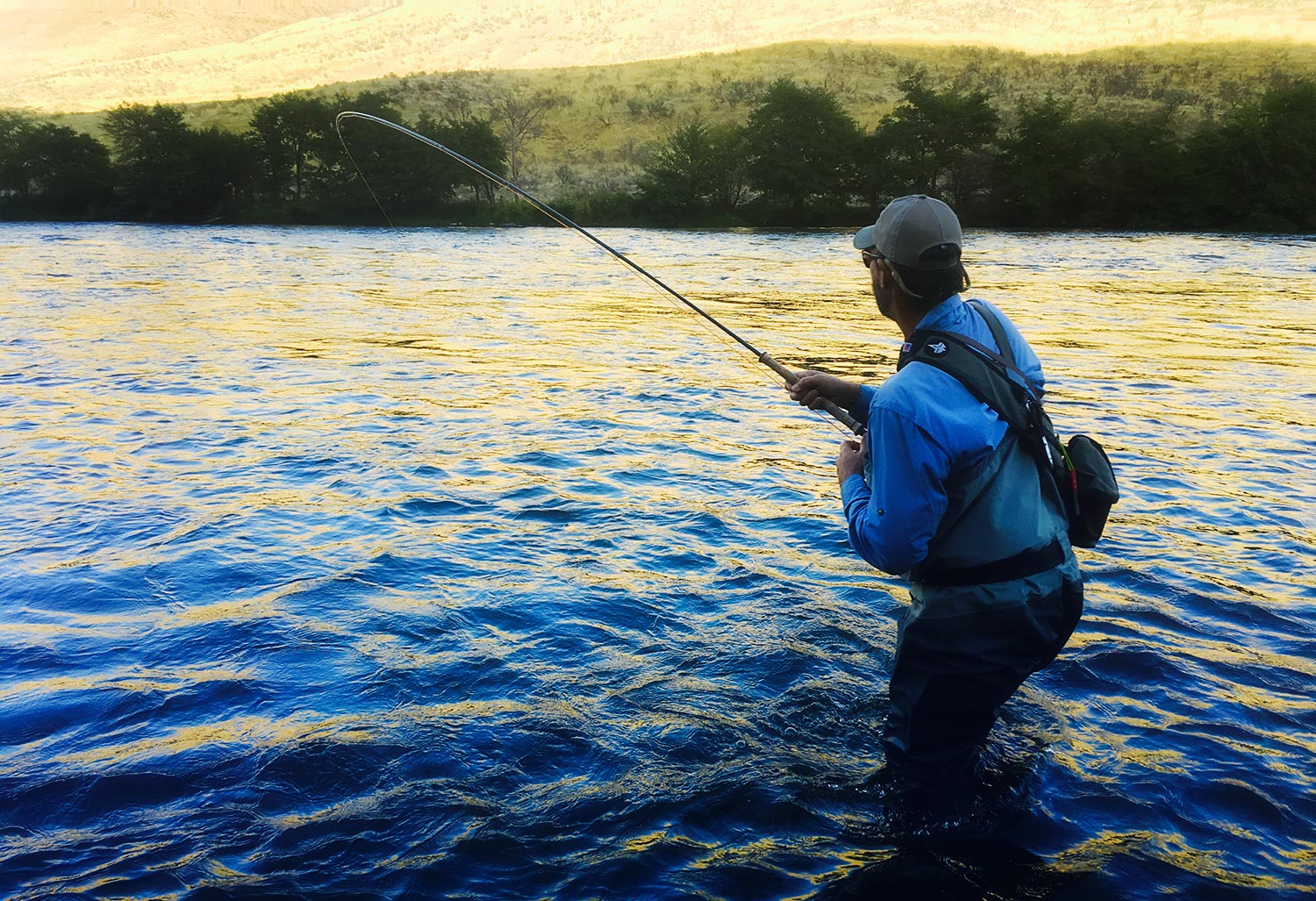
I just got back from hosting two groups of anglers on this year’s Deschutes River Steelhead Camp.
This trip is always a highlight of my year. Because it’s just so much fun and because there is nothing I love more than swinging flies for steelhead. Camping on a beautiful river and sharing some water and whisky with like-minded anglers would be awesome even if it didn’t involve one of my favorite fish species.
Steelheading is a unique fly fishing experience, especially when done with a two-hand rod and a swung fly. It offers plenty of challenge and technique, even when the fishing is stellar. It’s definitely about quality over quantity and if you are the kind of angler who needs constant feedback, the biggest challenge can be in your head.
I’ve always said the reason steelheaders are so cranky is because they spend so much time staring at the water thinking about all the bad things they’ve done. It’s funny but all too true. We all know the voice in our head that, when denied a pull for a while, starts to chant, “You Suck! You Suck! Yes You Do!”
For some anglers, and especially for beginners, this can be a real problem. Not just because it will melt your spey cast down but because it’s no fun. The best way I know to catch fish is to fish with confidence and if you lose your confidence you’re on a slippery slope to skunk town. Trust me, I’ve been there.
One of the coolest things about the Steelhead Camp is that I get to see a lot of anglers catch their first steelhead. The Deschutes is a great place for that because the fishing is so good. While the fishing this year was good by almost any standards, it was off for the Deschutes.
The generation of steelhead which are returning to the river for the first time this year faced some rough conditions. These fish, known as “single salt” fish, usually make up the largest part of the run but this year they returned in smaller numbers. It’s kind of a good news / bad news situation. While numbers are lower than normal, average size is larger. Again, quality over quantity.
I’m really proud of all of my anglers, who kept their attitudes straight, fished hard and had fun. In the end, all but one caught fish, but several paid their dues getting it done. That, of course, makes it that much sweeter. The other good thing about the camp is that anglers have great support, both technical advice and communal encouragement. It makes a big difference.
HERE ARE A COUPLE OF THINGS TO KEEP IN MIND WHEN YOU’RE NOT CATCHING STEELHEAD.
Read More »Gold Nugget
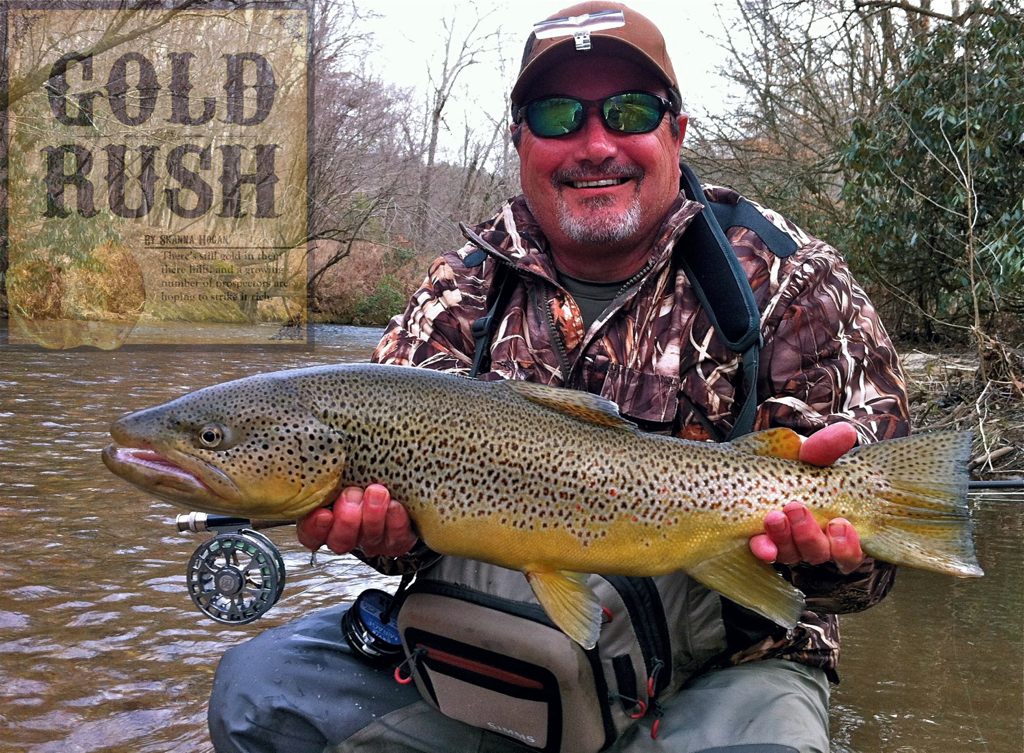
Trophy brown trout like this one are worth their weight in gold.
I’m a big fan of that Gold Rush TV show filmed up in Alaska. I don’t know what it is about that show but I’m hooked. Go ahead, call me dumb for wasting my time watching it, I’m just dying to see one of those crews dig up a fortune of gold that will give all of their families peace, security and well being. If there’s one thing I’ve learned after watching Gold Rush for almost three seasons now, it’s that gold mining does not come easy. It requires every ounce of energy and stubborn persistence to find enough gold for you to come out ahead, and then, even the biggest of crews can get outperformed by one lucky schmuck with a metal detector. Just ask that Australian amateur gold prospector with a metal detector who recently found a 12-pound nugget worth well over $300,000. Sometimes, no matter how diligent you are, it all boils down to timing and luck. The entire deal felt eerily similar to a giant 26″+ wild brown trout a client of mine landed last week.
Read More »Isonychia Nymph Patterns – 4 Proven Imitations
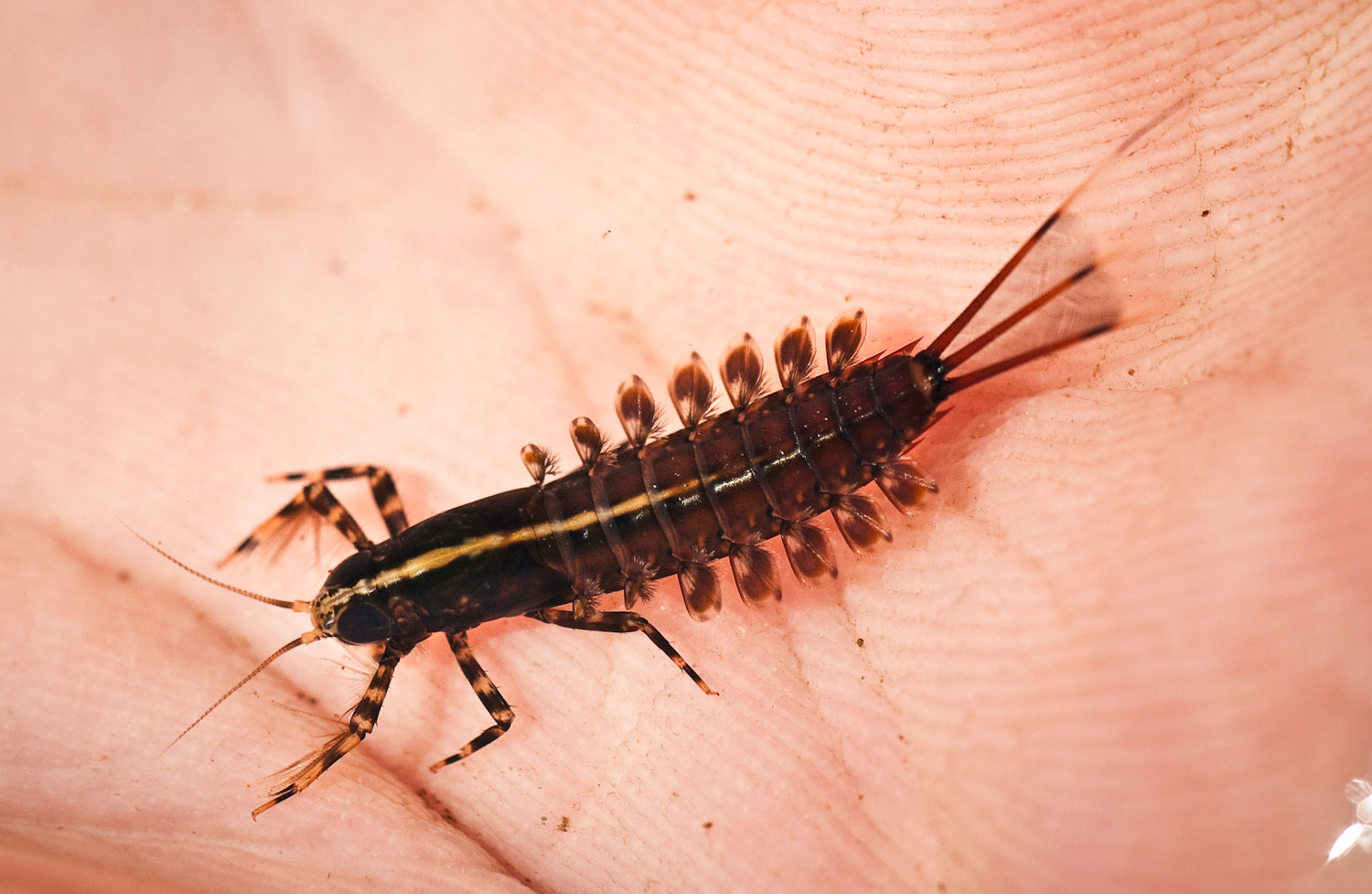
The Isonychia Nymph is a pattern that should be carried in the fly box of every traveling fly angler. Although these aquatic mayflies do not inhabit all streams in great density, where they are found in abundance, they are shown great favoritism by foraging trout who will often key in on them exclusively. The Isonychia usually hatches during the summer months, with some locations in the United States and abroad, returning a second time during the fall season.
These beautiful mayfly nymphs are olympic class swimmers, and fly tiers should try to tie their Isonychia fly imitations with materials that breath and move naturally in the water to mimic this trait. Furthermore, twitching and swinging Isonychia nymph patterns during the drift, is highly suggested to help attract attention and trigger strikes by trout. The light colored stripe, that runs down the back of most Ishonychia nymphs, is the most recognizable feature that tips fly anglers off to the correct classification of these nymphs. That being said, not all species carry the white stripe in such flamboyancy, so it’s best to sample your local streams and rivers when tying your own imitations.
Below are 4 Isonychia nymph patterns that I’ve used in the past with great results. Most Isonychia nymphs measure in the size 10-12 hook range, but most fly fisherman agree it’s always a good idea to stock a couple different sizes in your Isonychia fly patterns to help insure you’ll be able to accurately match the bugs on the waters that you may find while fly fishing.
Read More »Shrimp Part 2: Cannula Shrimp
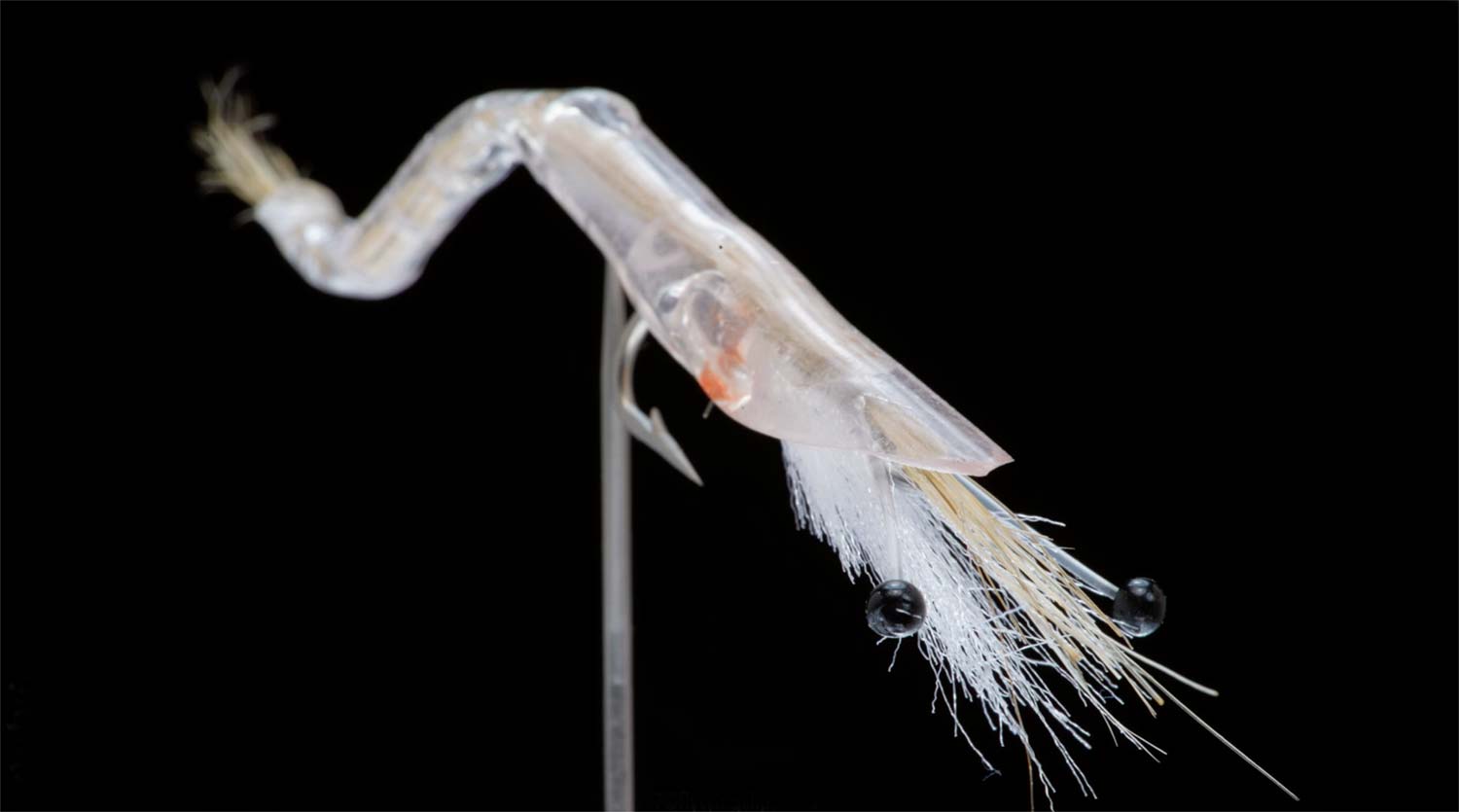
By Herman deGala This fly came about because I was changing out my cannula for my oxygen when I noticed that it looked like a shrimp. At the time I was also working out a grass shrimp pattern that a friend had asked me to take a look at for those double digit o’io(bonefish) from my home in Hawai’i. I adapted my technique for crimping the abdomen with a heated pair of hemostats from my mysis shrimp and just increase its scale. You can purchase cannulas off of the web get them from a friend who is on oxygen. As for me I’ll have a lifetime supply. Watch the video and learn to tie deGala’s Cannula Shrimp. Mahalo, Herman deGala Signature Fly Designer for Umpqua Feather Merchants. / http://flytyingclips.com Gink & Gasoline www.ginkandgasoline.com hookups@ginkandgasoline.com Sign Up For Our Weekly Newsletter!
Read More »Big Salmon and Rock N’ Roll: An Interview With Eric Clapton
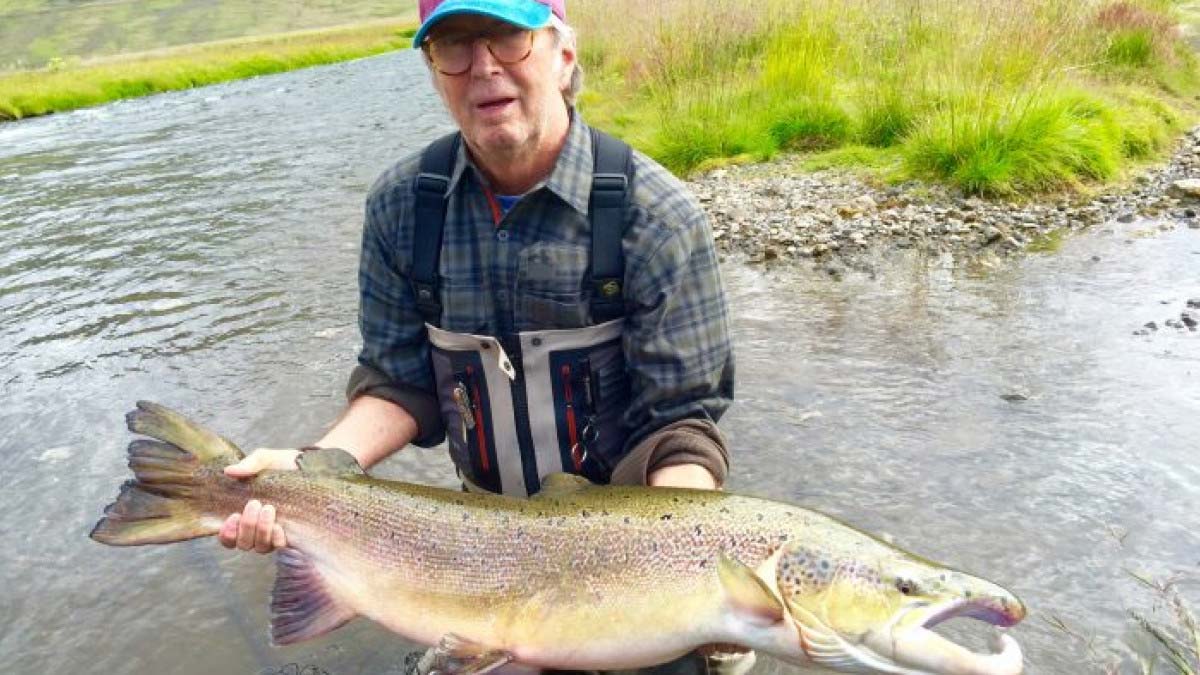
The name Eric Clapton is synonymous with rock and roll, but in certain circles he’s just as well known as a fly angler.
Clapton has been fishing his entire life but didn’t get into fly fishing until his status as a rock star was well confirmed. He even planned tour dates around famous rivers he wanted to fish. There was a time in his life when Clapton lived the ‘Rock N’ Roll Lifestyle’ like few have done but, since putting down heroin and alcohol in 1987, his life has been more like a John Gierach book than a rock and roll memoir.
Clapton’s recent angling obsession has been Atlantic Salmon. In August of 2016 he landed a fish measuring 42 1/2 inches on the Vatnsdalsa river in Iceland. That would be the fish of a lifetime for any angler, but Clapton returned in 2017 to land another salmon measuring 41 1/2 inches and weighing in 3 pounds heavier than the first. Not content to rest on his laurels, the rock and roll icon is heading back to Iceland this year and is predicting a personal best, if not a record.
I AM DEEPLY HONORED THAT ERIC CLAPTON TOOK THE TIME TO SIT DOWN FOR AN INTERVIEW AND SHARED HIS THOUGHTS ON FLY FISHING WITH G&G READERS. BELOW IS OUR CONVERSATION.
G&G: Eric, may I call you Eric?
EC: Absolutely.
G&G: Thank you so much for taking the time to talk. It’s ridiculously exciting for me, I’ve been a big fan since I was in high school. I was in several bands and my buddies and I used to cover your songs, so I apologize for that. We were awful.
EC: (Laughing) Well, thank you just the same.
G&G: I renumber seeing the photos of that big salmon you caught in 2016, good lord what a fish that was, it was easily the biggest salmon I’d ever seen. What went through your mind when you hooked that fish?
EC: Oh, it was total panic. The first run was like nothing I’d ever experienced. You know, that fish took me nearly a half mile downstream.
Read More »Making A Rattan Fly Rod Grip, Part 1: Video
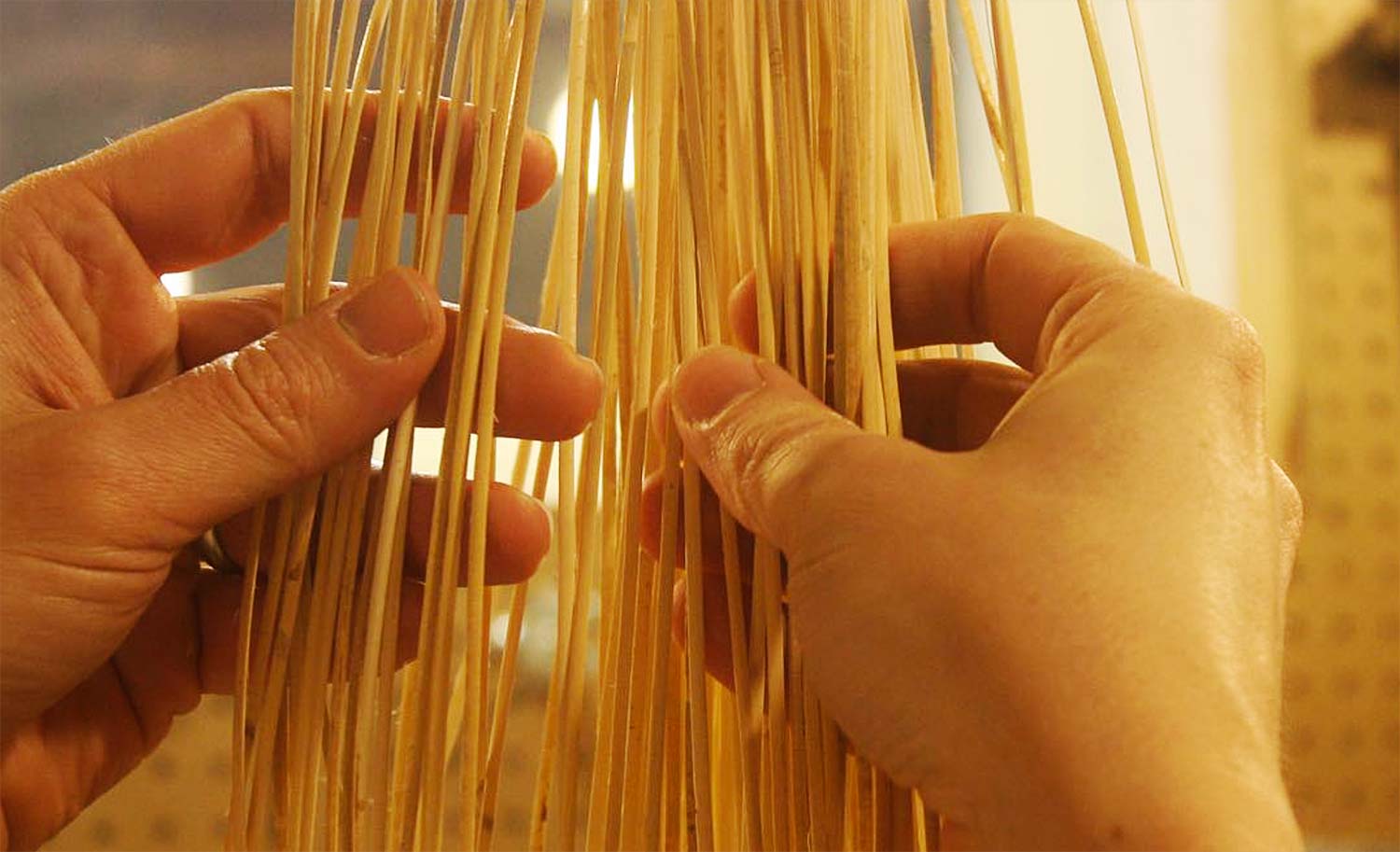
There’s nothing quite as classic as a well made Rattan grip on a fly rod.
In addition to being beautiful, a rattan grip has a great feel in the hand. It’s the finishing touch that sets off a rod build and makes it just a little different. It’s especially nice on a split cane rod, but great on graphite and glass as well.
Our buddy Matt Draft, of Proof Fly Fishing is here with a great tutorial video on how to make your own rattan fly rod grips. It doesn’t take a lot of experience or fancy tools to ad this beautiful finishing touch to your rod.
WATCH THE VIDEO AND LEARN TO MAKE A RATTAN FLY ROD GRIP.
Read More »Dunnigan’s Panty Dropper Nymph
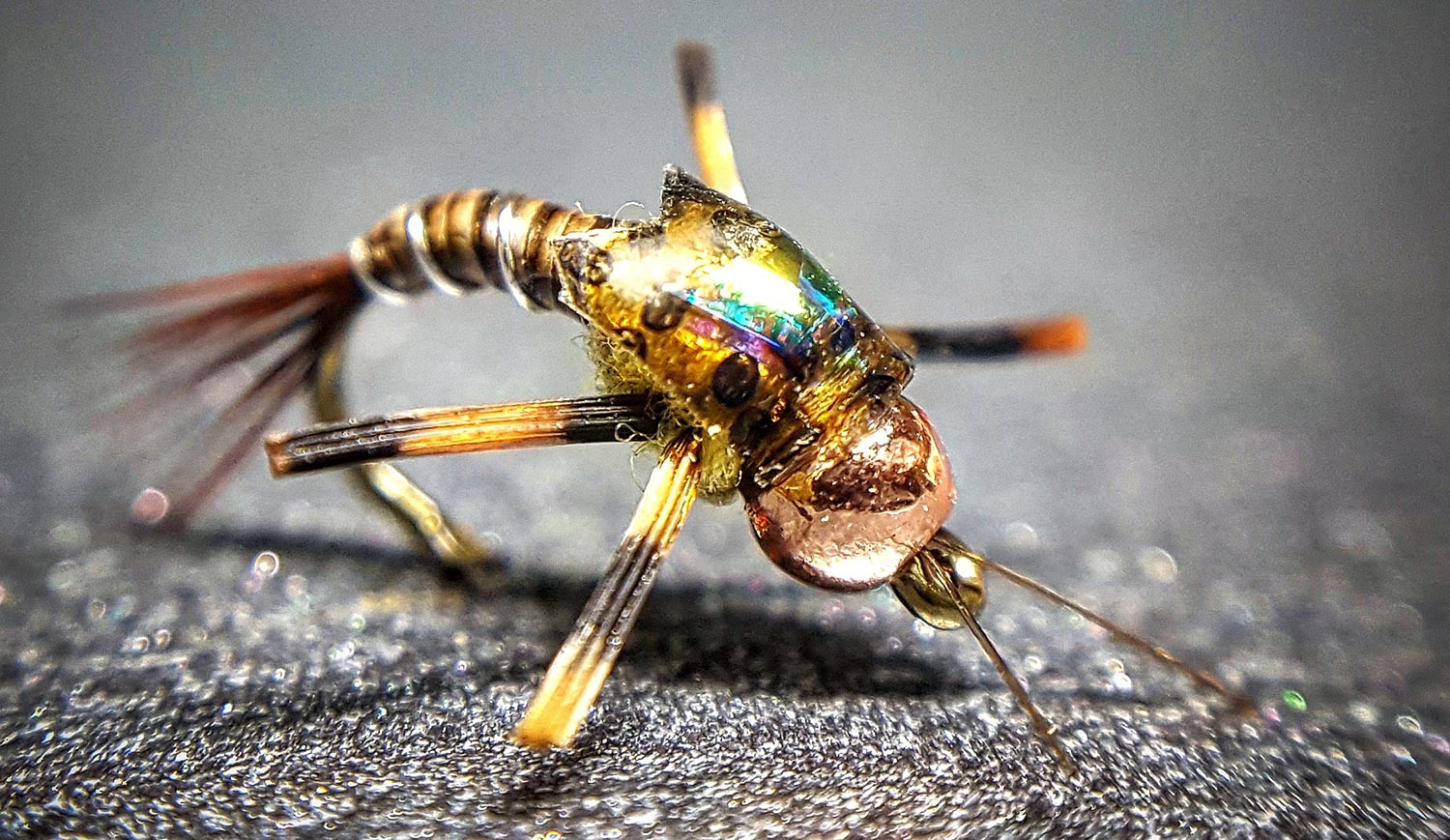
By Bob Reece Dunnigan’s P.D. Nymph is a trout magnet. As I’ve moved further into my fly tying and fishing journey, I’ve been blessed to meet some outstanding people. Casey Dunnigan happens to be one of them. A skilled welder by trade, his ability to create with his hands is evident in his fly tying as well. Casey’s inspiration for designing his Panty Dropper (P.D.) nymph pattern, came as a result of extensive time collecting live specimens. He wanted a highly accurate P.M.D. imitation that combined realistic traits, like the fibbett antennae, with enough subtle flash to set it apart from the underwater mix. The enlarged wing case of the pattern is perhaps its most dynamic characteristic. This element was included to parallel the distended state of that feature in naturals as they near emergence. I was lucky enough to get my hands on this pattern a few years ago when I traded Casey a dozen of my Beefcake Beetles for equal amount of his P.D. nymphs. The dozen that I received were size sixteens. Casey typically ties and carries the range of eighteen to fourteen. It was late summer when we made this exchange. In the weeks that followed I spent several days on a few of my favorite steams throughout Wyoming and Colorado. I was blown away by the effectiveness of this pattern as it produced multiple days of more than thirty fish to my net. Every once in a while a pattern comes along that truly sets itself apart from others. I firmly believe Dunnigan’s Panty Dropper to be one of those. This highly accurate imitation turns fish at level that I’ve seldom seen. Whether you tie or buy, take the time to add this bug to your nymphing arsenal this year. Watch this video … Continue reading
Read More »Why I Always Carry a Backup Gear Box
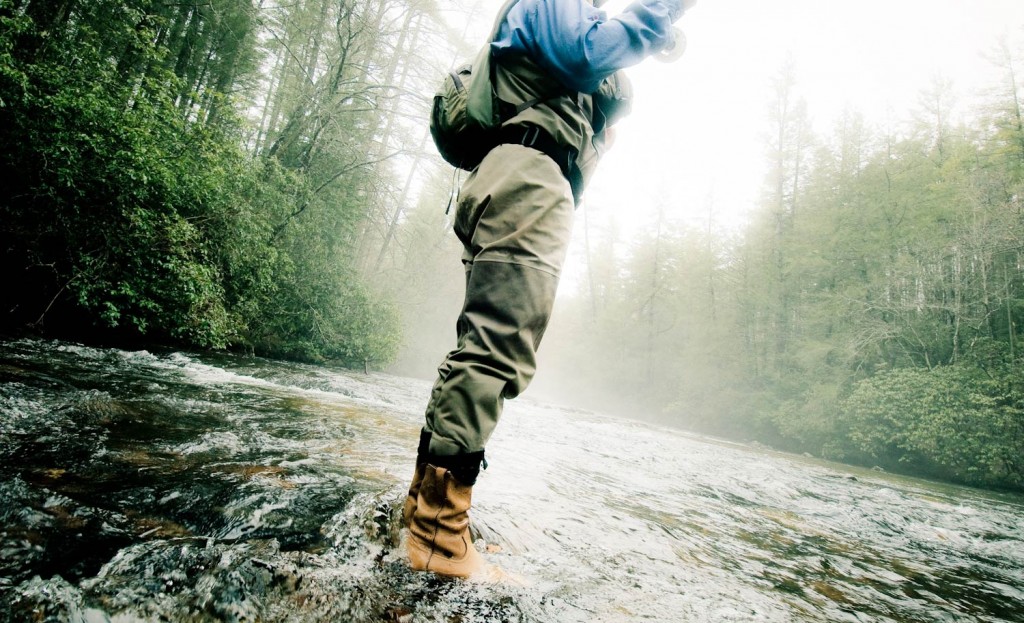
HAVE YOU EVER MADE IT TO THE RIVER AFTER A TWO HOUR DRIVE AND REALIZED WHEN YOU GOT THERE, YOU HAD FORGOT TO PACK ONE OF YOUR CRUCIAL PIECES OF FISHING GEAR?
I’ll be the first to admit I’ve been that unfortunate angler plenty of times, and it can ruin a day of fishing. A few years back I was forced to spend a day on Depuy’s Creek in MT wading around in a pair of my Justin cowboy boots. It was really ironic because I spent the morning packing all the gear for my virgin fly fishing buddies, and I was the one that ended up leaving my damn wading boots on the front porch. Those Justin boots were surprisingly comfortable wading in but they had zero traction, and I looked like a moron. I’ve never forgot my wading boots on a fishing trip since.
Backup Fly Fishing Gear Box. Photo By: Louis Cahill
These days I always try to keep a box of backup gear in my vehicle at all times when there’s room. This way I’m covered if a piece of gear slips my mind during my packing or if I have gear break down on me on the water. Don’t get carried away with the backup gear box, just pack the essentials. I”m talking about focusing on the gear that will cause you to shout multiple four letter obscenities when you find yourself without them. Below is a short list of gear I carry with me at all times.
CONTENTS OF MY BACK GEAR BOX
Read More »Totality
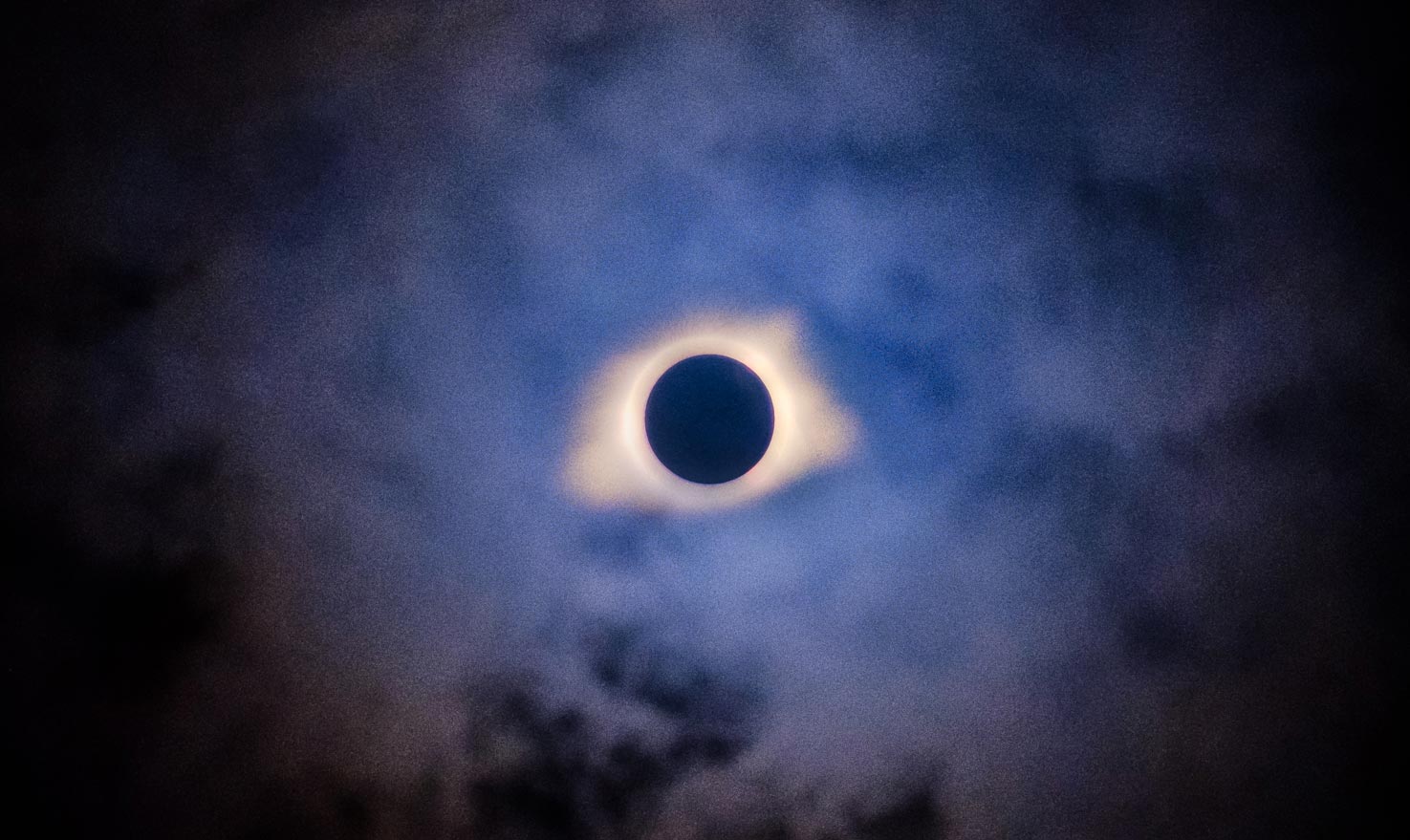
Admittedly this doesn’t have a lot to do with fly fishing, other than taking place on a trout stream.
When I saw the map depicting the path of totality for the solar eclipse of 2017, I knew exactly where I wanted to be. The thin line of totality passing through the mountains of western North Carolina intersected one of my favorite places on earth. A spot that’s near my heart for a couple of reasons.
If I were to tell you where it is, you’d likely be surprised. If you know it, please don’t say. It’s one of those spots that gets plenty of attention but it wasn’t always that way. It used to be the spot I could go and fish all day without seeing another angler. Well, not far from the spot anyway where I caught my first brook trout. Near where I’ve caught a handful of big wild brown trout, and a spot I almost drowned myself. A place where I saw a boulder the size of a car come off the mountain. It’s a spot that’s full of memories and it’s having been discovered by a great many anglers might make it less pleasant to fish but no less pleasant to remember.
I originally made plans to fish with Justin, but plans fall apart if they are made too far in advance. I decided it would e a great day to spend with my wife, Kathy, and our puppy, Josie. It would be Josie’s first road trip, if you don’t count the flight home from South Andros, and I was excited to see how she’d do, as I have many more planned.
We reached our chosen spot, at the top of a favorite waterfall, about an hour before totality. Everyone whom I had told where we were going, including my wife, thought it would be a bad idea. That there would be no way we’d have a view of the sun for the dense trees and steep gorge walls. “Trust me,” I told Kathy, I know exactly where the sun will be. I should. The top of this falls is the exact place where I shot the image that sucked me forever into the fly fishing business. I never forget a location.
It couldn’t have
Read More »Catching Trash and Trout
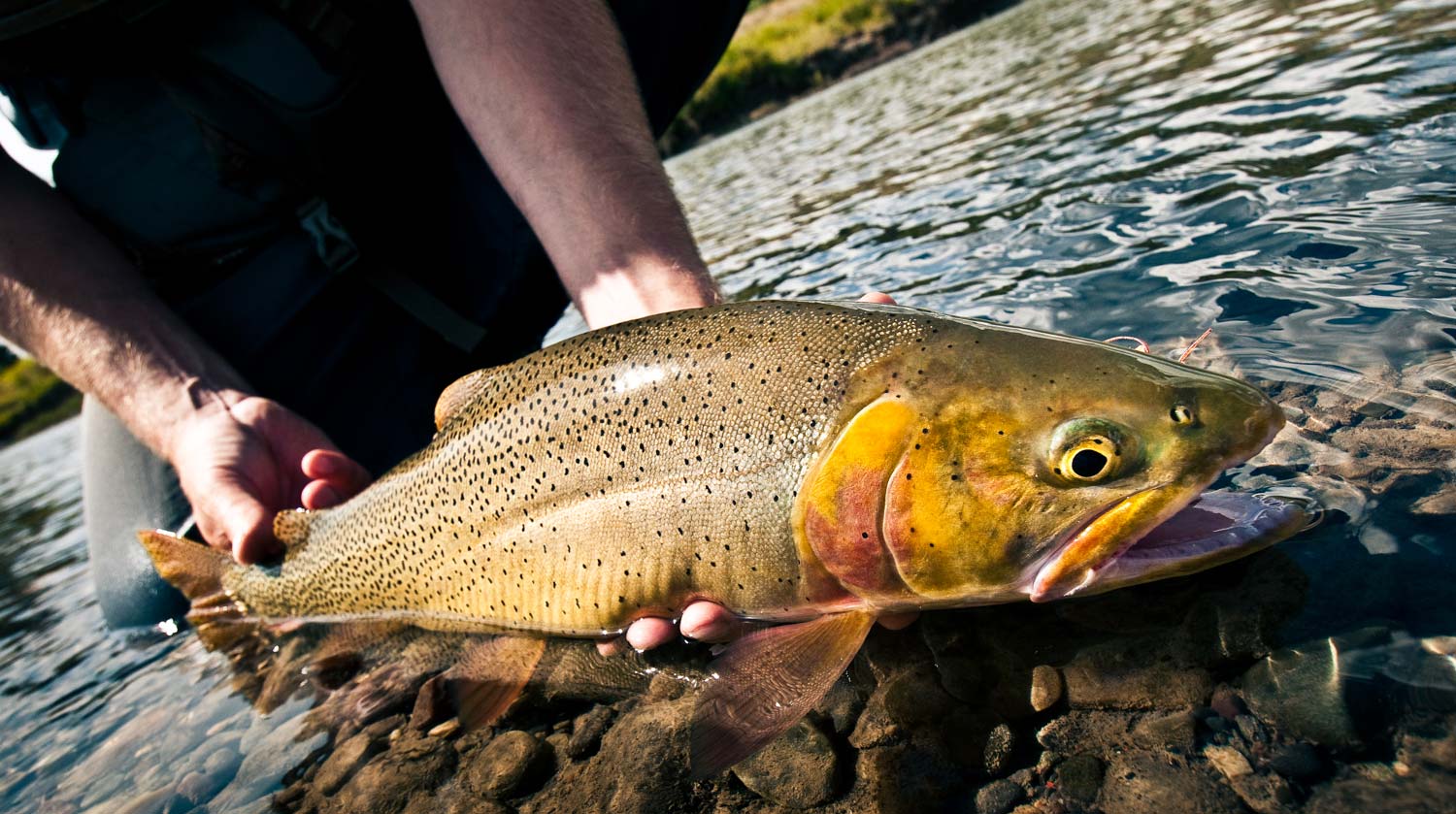
By: Alice Tesar
Robbie and I headed down stream on a remote creek in Wyoming and passed the only other angler we would see that day.
He was headed the opposite direction, having already fished the holes we were headed to. He seemed unsteady walking but opted to cross through the strong waist-deep current regardless. My husband, who is always willing to help a stranger (sometimes to my dismay as we rush to an appointment), watched out of the corner of his eye ready to jump in and pull this man from the current should he lose his footing. The man, slow and steady, made it across safely however as he reached the solid ground of the shoreline a plastic sandwich bag fell from his pack. No doubt he didn’t not see it, but I am also certain given his physical state would not have gone to great lengths to reclaim the piece of litter as it drifted downstream. Robbie and I rerouted our planned course downstream to grab the bag. It was still far out from us and we could see it was going to get hung-up in a large eddy soon. As we headed towards the eddy, Robbie cast out his streamer in jest for some “casting accuracy practice”. His line landed on the bag, but the sink tip leader sunk the fly before we could catch the bag. Re-cast out and again line on the bag, but unable to reel it in. I kept walking to where I thought the bag would land when I heard a yelp from Robbie, “THAT’S A HUGE ASS FISH!”
Read More »